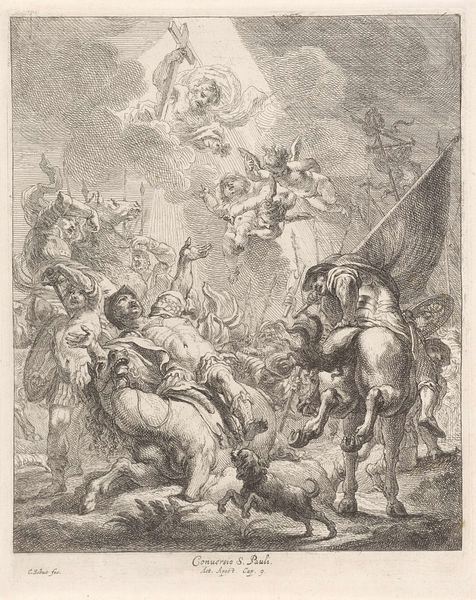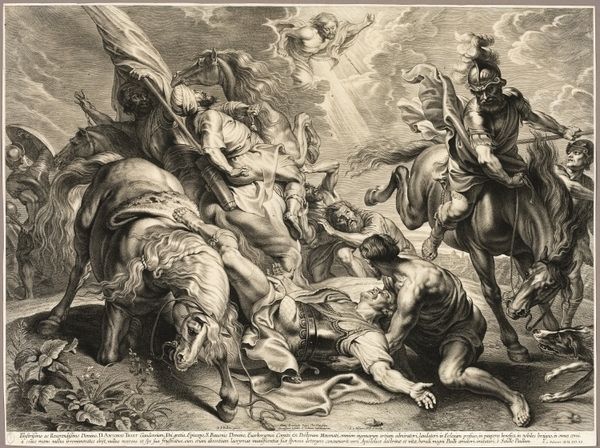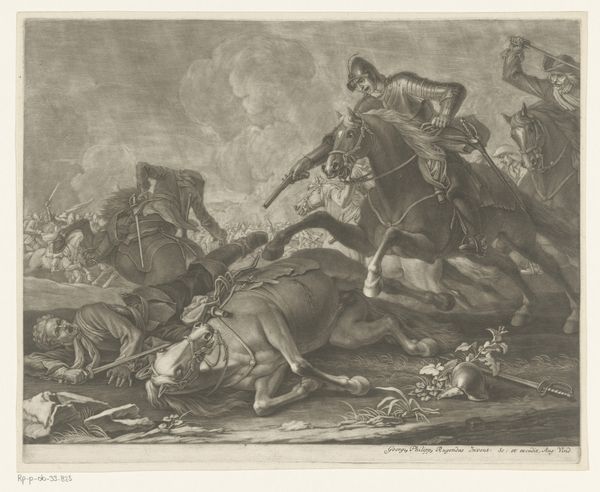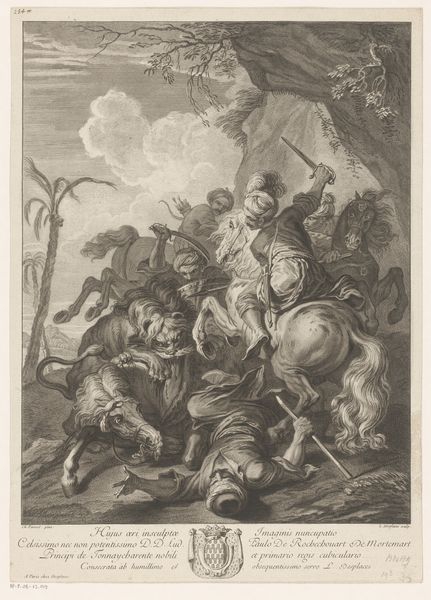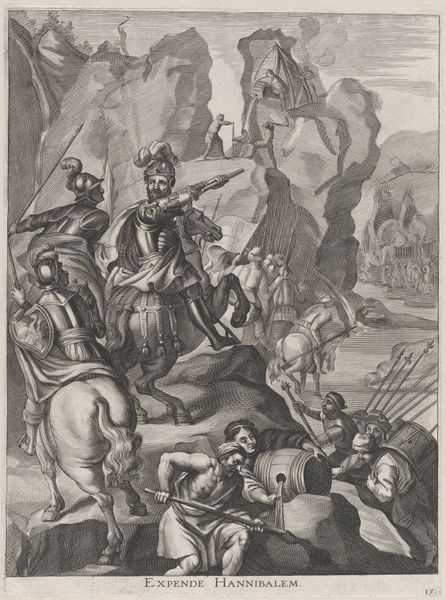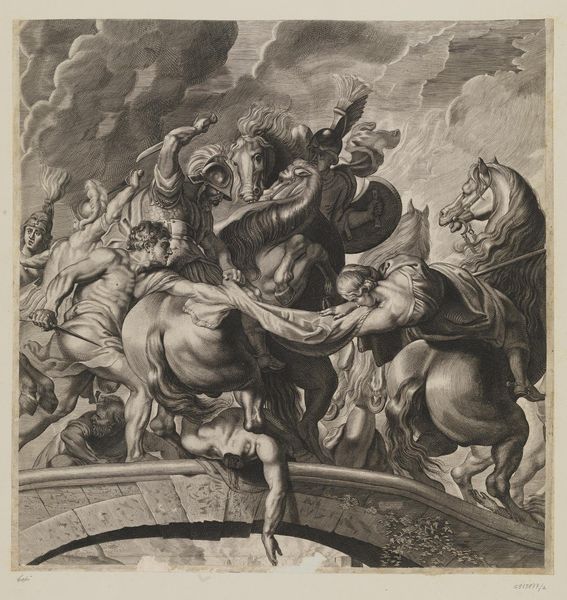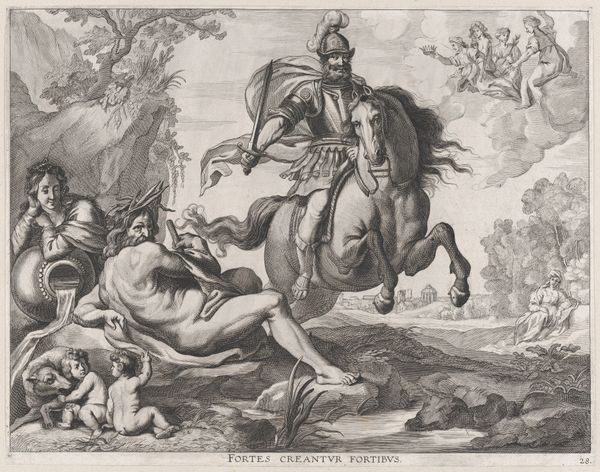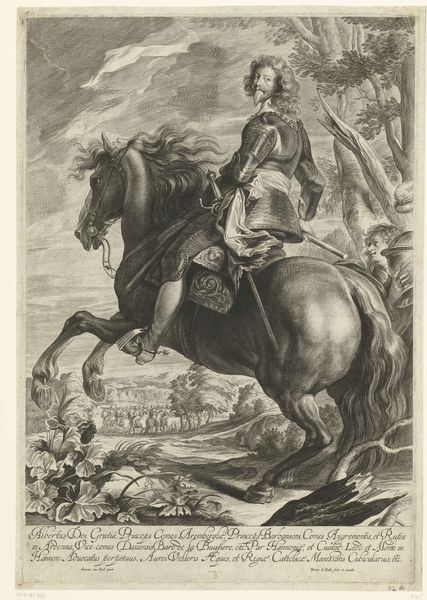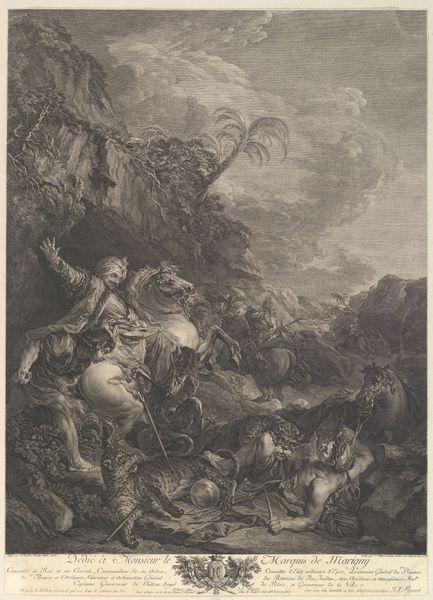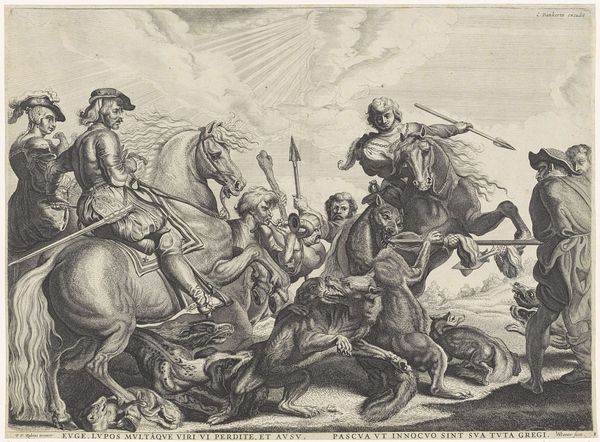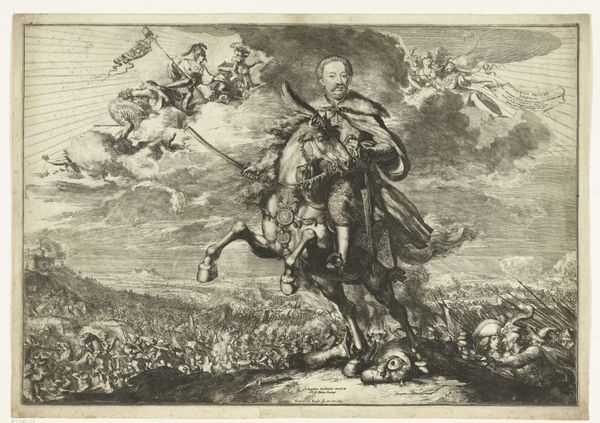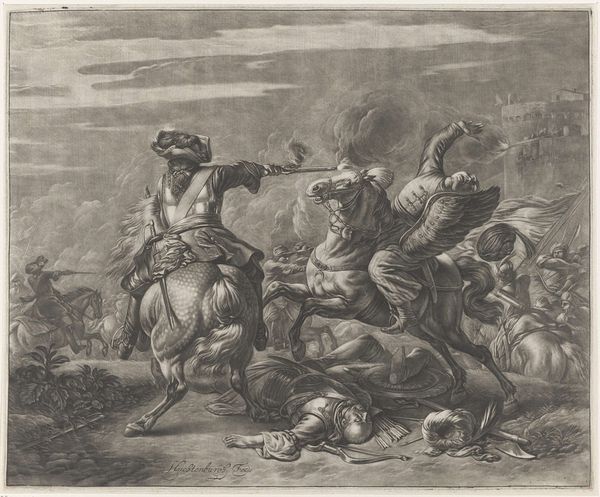
print, engraving
#
narrative-art
#
baroque
# print
#
old engraving style
#
landscape
#
history-painting
#
engraving
Dimensions: height 481 mm, width 345 mm
Copyright: Rijks Museum: Open Domain
Editor: Here we have "Luipaardjacht," or "Leopard Hunt" in English, an engraving from around 1731 by Louis Desplaces. The scene is chaotic; men on horseback seem to be wrestling with leopards. I'm struck by the almost dizzying composition—it’s hard to know where to focus. What do you see in this piece? Curator: Indeed. My focus immediately goes to the dynamic interplay of line and form. Consider how the artist utilizes the sweeping lines of the horses' bodies, the dramatic curves of the figures in distress, and even the calculated placement of light and shadow. Note, for instance, how the cascading folds of the robes create movement and tension. Are you observing how Desplaces uses hatching and cross-hatching to build volume and texture, animating the figures and enhancing the emotional intensity? Editor: Yes, now that you point it out, I see the build-up of the lines. It's like a storm of textures on the page. What is the purpose of the chaos? Curator: The arrangement certainly contributes to a heightened sense of drama, which can, in turn, provoke a complex response from the viewer. Beyond its literal subject matter, this work, I posit, is equally, if not more concerned with line and the overall balance. It is baroque! We may read the arrangement as being dynamic; that it is bursting with form! This is a common trait. Consider, for instance, how similar engravings manage tone through comparable applications of line. Editor: That's fascinating. So even the chaotic feel could be a conscious choice based on formal artistic considerations. Curator: Precisely. This awareness transforms our understanding; moving us beyond a simplistic reading of subject matter into an appreciation of its artistry. Editor: I see the engraving in a completely new way now. Thank you for shifting my perspective! Curator: My pleasure! Focusing on form can certainly elevate one's reading of this era and, subsequently, of this work!
Comments
No comments
Be the first to comment and join the conversation on the ultimate creative platform.
